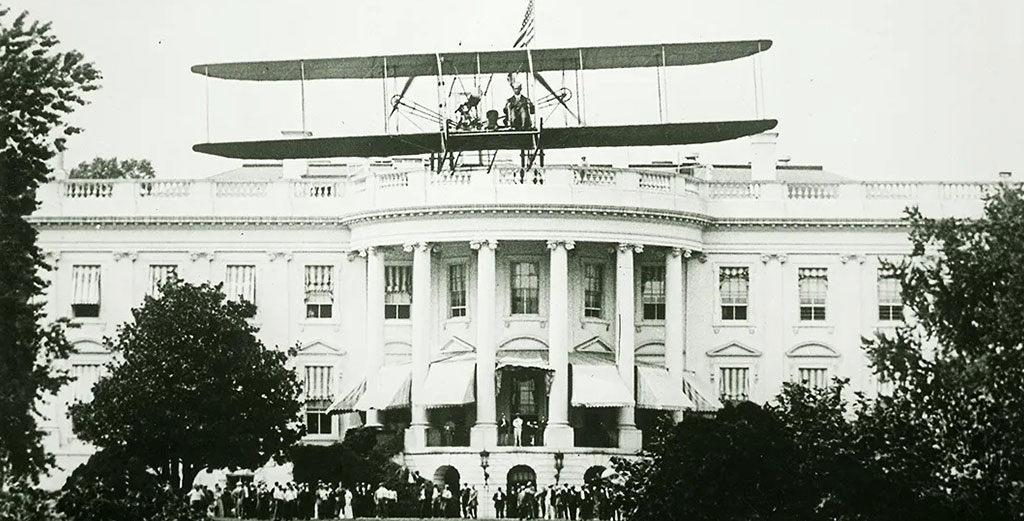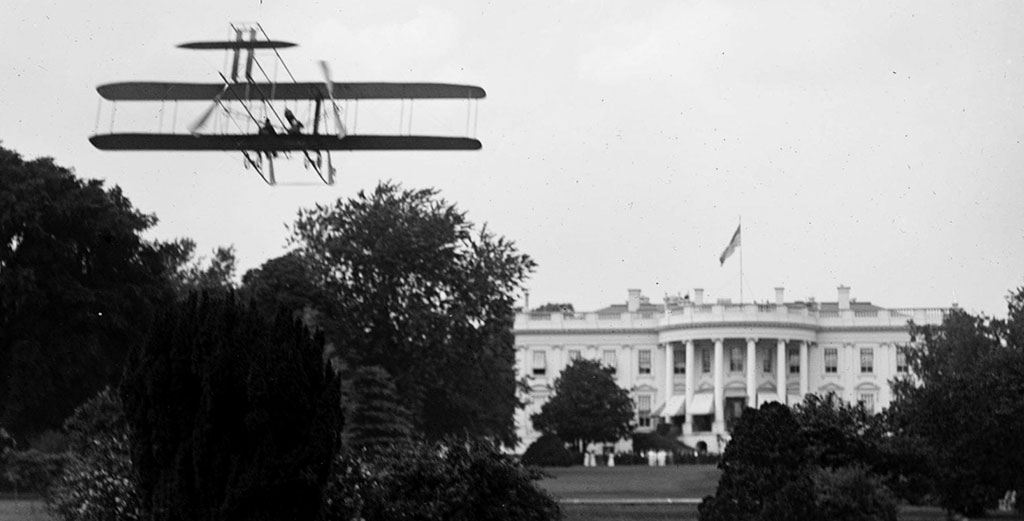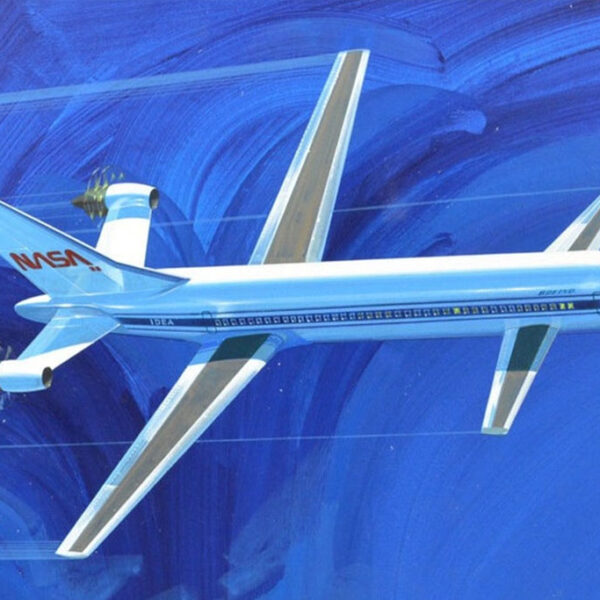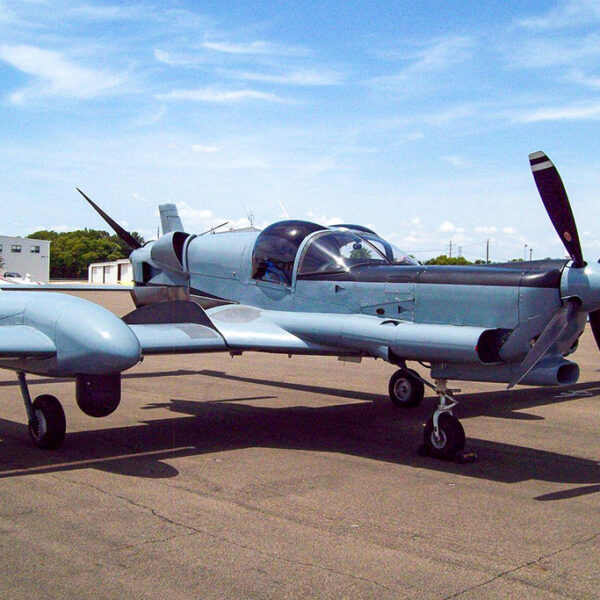White House Lawn Landing

What kind of individual would purposely land an airplane on the White House lawn? In modern times, one interested in lengthy imprisonment – if they survive the landing at all. But in the early days of aviation, all it took was flying skill and a swashbuckling sense of adventure, and inventor Harry Atwood had a surplus of both.
Born in 1883, Atwood immediately pursued aviation as a hobby and career. After training at the Wright Flying School near Dayton, Ohio, he explored the limits of his flying ability and the capabilities of the airplanes he flew. Within months of his first lesson, he broke a distance record, flying from Boston to Washington, D.C.

Upon arrival, he landed on the south lawn of the White House, where President Taft was in attendance and observing the spectacle. After landing, he reportedly rolled to a stop – without brakes – and came to a stop just 30 feet away from the president. Later, he took off from the same lawn and went on to enjoy a long career of flight instructing and aeronautical engineering.





